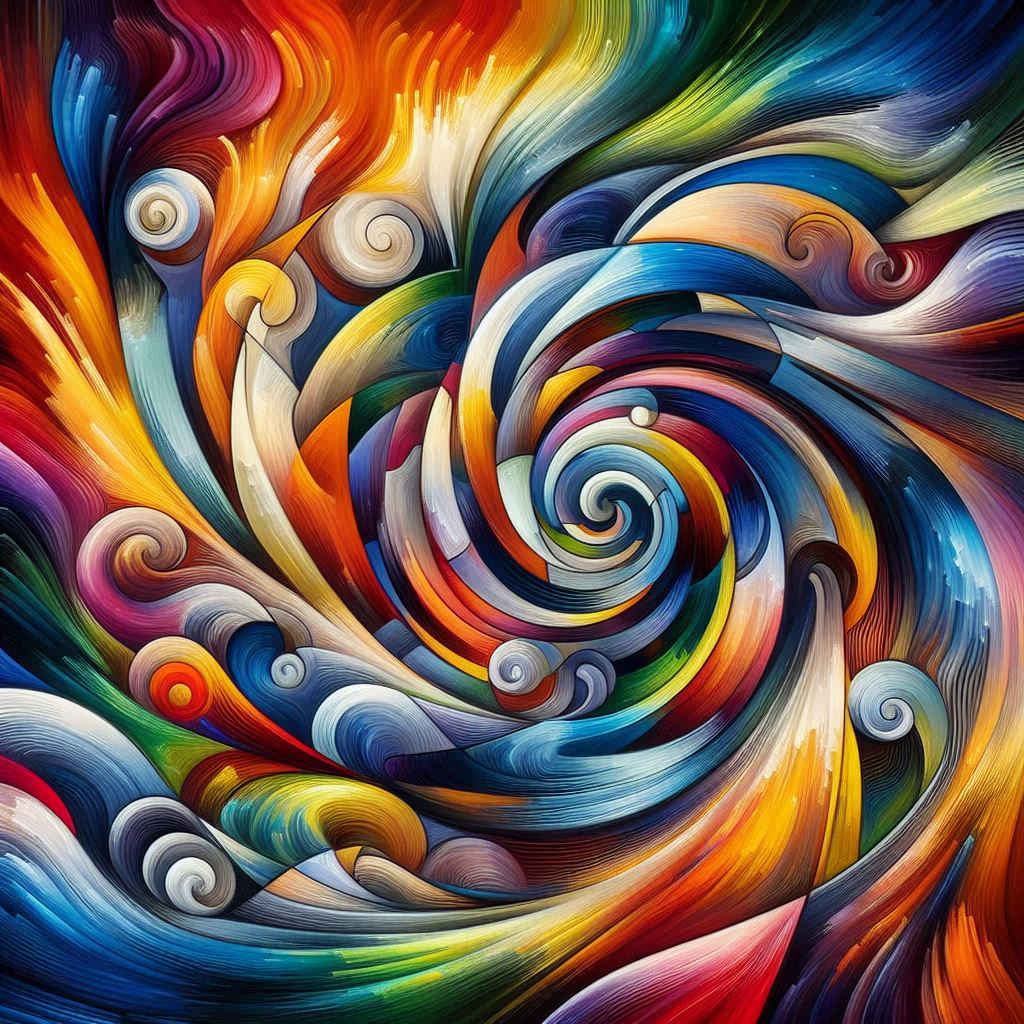
The concept of abstract artwork
What it is
Abstract art refers to expressing an artistic style that deviates from the accurate representation of visual reality. Rather than aiming to depict reality, abstract art uses shape, color, texture, and texture to convey meaning and evoke emotion. By emphasizing conceptual interpretation and often leaving out tangible elements, abstract art encourages viewers to engage with the artwork on a more personal and introspective level This approach does not enable artists to explore creativity, individuality, and departures from traditional representational art
Abstract art styles and designs
- Abstract Art Styles Overview: Abstract art encompasses a diverse range of styles, each with unique characteristics. Styles like Pointillism, Fauvism, Expressionism, Cubism, Futurism, Constructivism, Suprematism, and Geometric abstraction highlight the variety within the abstract genre, showcasing different approaches to form and expression.
- Expression Through Techniques: Abstract Expressionism, influenced by artists like Jackson Pollock, often features paint splatter, drip, and splash techniques, allowing for expressive and spontaneous creations.
- In Design: Abstract art finds its place in design, with styles such as Paint Splatter and Geometric abstraction being popular for inspiring creative designs.
- Trending Styles: Some trending abstract art styles include those that incorporate elements of minimalism, surrealism, and other contemporary influences, showcasing the evolution and adaptability of abstract artistic expression.
- Creation in Various Forms: Abstract art is not confined to paintings; it extends to drawings as well, providing artists with a broad canvas for exploring creativity and breaking away from traditional representational forms.

Techniques
- Action Painting: This technique involves spontaneous, energetic brushstrokes, emphasizing the physical act of painting, with notable examples in Abstract Expressionism.
- Collage and Decollage: Artists use collage by assembling various materials, while decollage involves removing layers, and creating texture and depth in abstract compositions.
- Acrylic Painting Techniques: Acrylic painting offers versatile methods such as dry brush, smooth blending, impasto, washing, pouring, and splattering to achieve various abstract effects.
- Expressive Freedom: Abstract art allows for expressive freedom, with artists employing various mediums and techniques to break away from realistic representation.
- Non-Realistic Representation: Characterized by a departure from realistic depictions, abstract art focuses on conveying emotion and intangible experiences through non-realistic representations.
- Making Paintings More Abstract: Artists explore various approaches, such as altering realism, using expressive brushwork, and experimenting with composition, to make paintings more abstract.

Enjoyment
- Engaging the Mind: People who appreciate abstract art often enjoy engaging their minds in deciphering meanings and patterns within the artwork, finding pleasure in the intellectual aspect of interpretation.
- Personal Expression: Abstract painting provides a platform for individuals, regardless of artistic expertise, to find joy in expressing their true selves through art, contributing to a sense of fulfillment.
- Satisfaction and Imagination: Abstract art offers a unique form of satisfaction derived from involvement and imagination rather than narrative storytelling. The enjoyment lies in the freedom to interpret and connect with the artwork emotionally.
- Inspiring Emotion: Abstract art, being non-objective and breaking away from traditional styles, intends to inspire emotion and intangible experiences, appealing to those seeking a more emotional and visceral connection with art.
Conclusion
Abstract art, characterized by its departure from realistic representation, employs shapes, colors, and gestural marks to create compositions that often exist independently from the visible world. Styles and designs within abstract art encompass a wide array, including Surrealism, Dadaism, Cubism, and Fauvism, showcasing the diverse creative expressions within this genre. Techniques employed in abstract art range from the spontaneous brushstrokes of Action Painting to the layered textures of Collage and Decollage, providing artists with versatile means of artistic expression. The enjoyment of abstract art is derived from engaging the mind in deciphering meanings, expressing one’s true self, and finding satisfaction through involvement and imagination. It is a non-objective form of art that aims to inspire emotion and intangible experiences, offering individuals the freedom to interpret and connect with the artwork emotionally rather than relying on a narrative structure. In conclusion, abstract art stands as a dynamic and inclusive form of artistic expression that continues to captivate and resonate with a diverse audience.
If you have questions about anything involving this concept explained comments go down below. I would love to help out.

